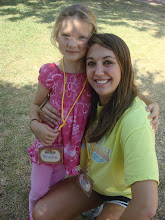Insanity and insane people in A Whisper in the Dark travels away from what we know so far about children’s literature. It is, as we said in class, a part of the gothic genre of literature, and by no means innocent in nature. This is the first time we see insanity in literature. Insanity is not an easy topic, so it makes this not an actual children’s literature example, but an example of children in literature. In A Whisper in the Dark we see Sybil battle the stress of being put in an insane asylum. At first we are unaware of where she is, since the story is written in first person. She eventually finds out that her uncle has put her there and claimed that she was insane. The problem is that whenever Sybil tries to defend herself, get out, or even just throws a tantrum she is just ignored thinking that she is crazy. When Sybil pleads to go see Madame we see, “my uncle did not answer me, but covered up his face with a despairing gesture, and hurried away from the room; the lawyer followed, muttering pitifully, ‘Poor thing! Poor thing!’” (236) Sybil is completely ignored because she is “insane.” Once Sybil is in the insane asylum the book completely changes pace, and gets the eerie “things aren’t what they seem” mood. We see Sybil start to turn mad. “Carpet worn like mine, the windows barred like mine” (237) we see Sybil as she has started to lose her mind, and she ahs begun pacing like the person above her does. With the story still in the first person, we do not fully believe Sybil but still feel the sense of hopelessness for her.
The mother daughter relationship we see in the previous novels is changed in Sybil and her mother. We do not see the normal relationship built on love, but a relationship that starts when Sybil’s mother has already gone insane. “My mother had been melancholy mad since that unhappy rumor of my father’s death; this affliction had been well concealed from me.” (240) If we were to put this kind of story around Ellen and her mother’s relationship, I do not think that anything could happen to her mother without Ellen not knowing. Sybil’s mother still helps get her child out of the trouble she is in by her “unerring instinct of a mother’s heart” (240). Her mother still loves her, but we find this out later since the story was written in first person. We have to rely on Sybil to tell us the whole truth throughout the whole story, even when she is mad. We eventually find out that we knew the truth all along, but this story was different to read since of the point of view it was written in.
Wednesday, February 24, 2010
Subscribe to:
Post Comments (Atom)






I agree it is definitely children in literature and not literature for children. There are very adult thing happening in this story. I would like to purpose the question that Professor Irvin did in class. Is Sybil really a child, or is she a young woman? I feel like the situations she finds herself in place her in the latter category.
ReplyDeleteEffie-
ReplyDeleteI like what you talk about in regards to the mother/daughter relationship. I concur that the author's 1st person point of view was the reason that so many facts were hidden from us. Personally, I had difficulty figuring out that it was Sybil's mama living above her and figured that when she saw the death body there she was just acting "insane". Good post & good insight.
Tripp